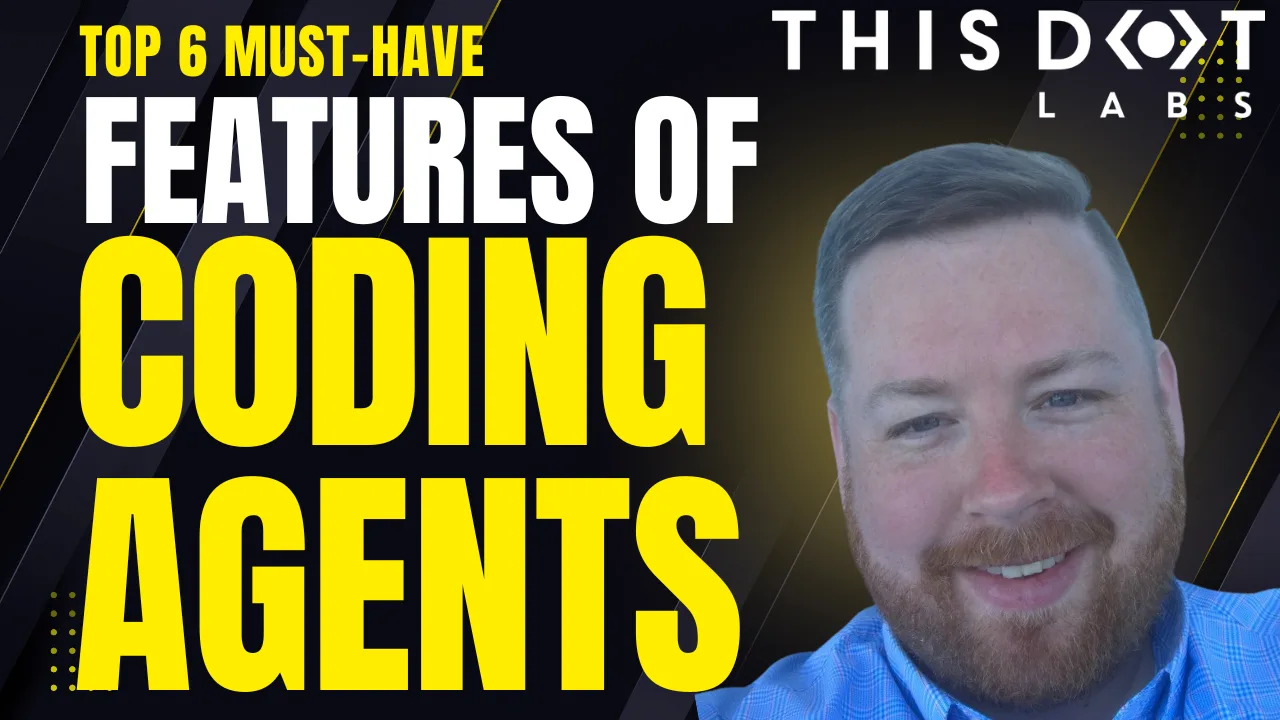Must-have Features of Coding Agents
Autonomous coding agents are no longer experimental, they are becoming an integral part of modern development workflows, redefining how software is built and maintained. As models become more capable, agents have become easier to produce, leading to an explosion of options with varying depth and utility. Drawing insights from our experience using many agents, let's delve into the features that you'll absolutely want to get the best results.
1. Customizable System Prompts
Custom agent modes, or roles, allow engineers to tailor the outputs to the desired results of their task. For instance, an agent can be set to operate in a "planning mode" focused on outlining development steps and gathering requirements, a "coding mode" optimized for generating and testing code, or a "documentation mode" emphasizing clarity and completeness of written artifacts. You might start with the off-the-shelf planning prompt, but you'll quickly want your own tailored version. Regardless of which modes are included out of the box, the ability to customize and extend them is critical. Agents must adapt to your unique workflows and prioritize what's important to your project. Without this flexibility, even well-designed defaults can fall short in real-world use.
Engineers have preferences, and projects contain existing work. The best agents offer ways to communicate these preferences and decisions effectively. For example, 'pnpm' instead of 'npm' for package management, requiring the agent to seek root causes rather than offer temporary workarounds, or mandating that tests and linting must pass before a task is marked complete. Rules are a layer of control to accomplish this. Rules reinforce technical standards but also shape agent behavior to reflect project priorities and cultural norms. They inform the agent across contexts, think constraints, preferences, or directives that apply regardless of the task. Rules can encode things like style guidelines, risk tolerances, or communication boundaries. By shaping how the agent reasons and responds, rules ensure consistent alignment with desired outcomes.
Roo code is an agent that makes great use of custom modes, and rules are ubiquitous across coding agents. These features form a meta-agent framework that allows engineers to construct the most effective agent for their unique project and workflow details.
2. Usage-based Pricing
The best agents provide as much relevant information as possible to the model. They give transparency and control over what information is sent. This allows engineers to leverage their knowledge of the project to improve results. Being liberal with relevant information to the models is more expensive however, it also significantly improves results.
The pricing model of some agents prioritizes fixed, predictable costs that include model fees. This creates an incentive to minimize the amount of information sent to the model in order to control costs. To get the most out of these tools, you’ve got to get the most out of models, which typically implies usage-based pricing.
3. Autonomous Workflows
The way we accomplish work has phases. For example, creating tests and then making them pass, creating diagrams or plans, or reviewing work before submitting PRs. The best agents have mechanisms to facilitate these phases in an autonomous way. For the best results, each phase should have full use of a context window without watering down the main session's context. This should leverage your custom modes, which excel at each phase of your workflow.
4. Working in the Background
The best agents are more effective at producing desired results and thus are able to be more autonomous. As agents become more autonomous, the ability to work in the background or work on multiple tasks at once becomes increasingly necessary to unlock their full potential. Agents that leverage local or cloud containers to perform work independently of IDEs or working copies on an engineer's machine further increase their utility. This allows engineers to focus on drafting plans and reviewing proposed changes, ultimately to work toward managing multiple tasks at once, overseeing their agent-powered workflows as if guiding a team.
5. Integrations with your Tools
The Model Context Protocol (MCP) serves as a standardized interface, allowing agents to interact with your tools and data sources. The best agents seamlessly integrate with the platforms that engineers rely on, such as Confluence for documentation, Jira for tasks, and GitHub for source control and pull requests. These integrations ensure the agent can participate meaningfully across the full software development lifecycle.
6. Support for Multiple Model Providers
Reliance on a single AI provider can be limiting. Top-tier agents support multiple providers, allowing teams to choose the best models for specific tasks. This flexibility enhances performance, the ability to use the latest and greatest, and also safeguards against potential downtimes or vendor-specific issues.
Final Thoughts
Selecting the right autonomous coding agent is a strategic decision. By prioritizing the features mentioned, technology leaders can adopt agents that can be tuned for their team's success. Tuning agents to projects and teams takes time, as does configuring the plumbing to integrate well with other systems. However, unlocking massive productivity gains is worth the squeeze. Models will become better and better, and the best agents capitalize on these improvements with little to no added effort. Set your organization and teams up to tap into the power of AI-enhanced engineering, and be more effective and more competitive.

